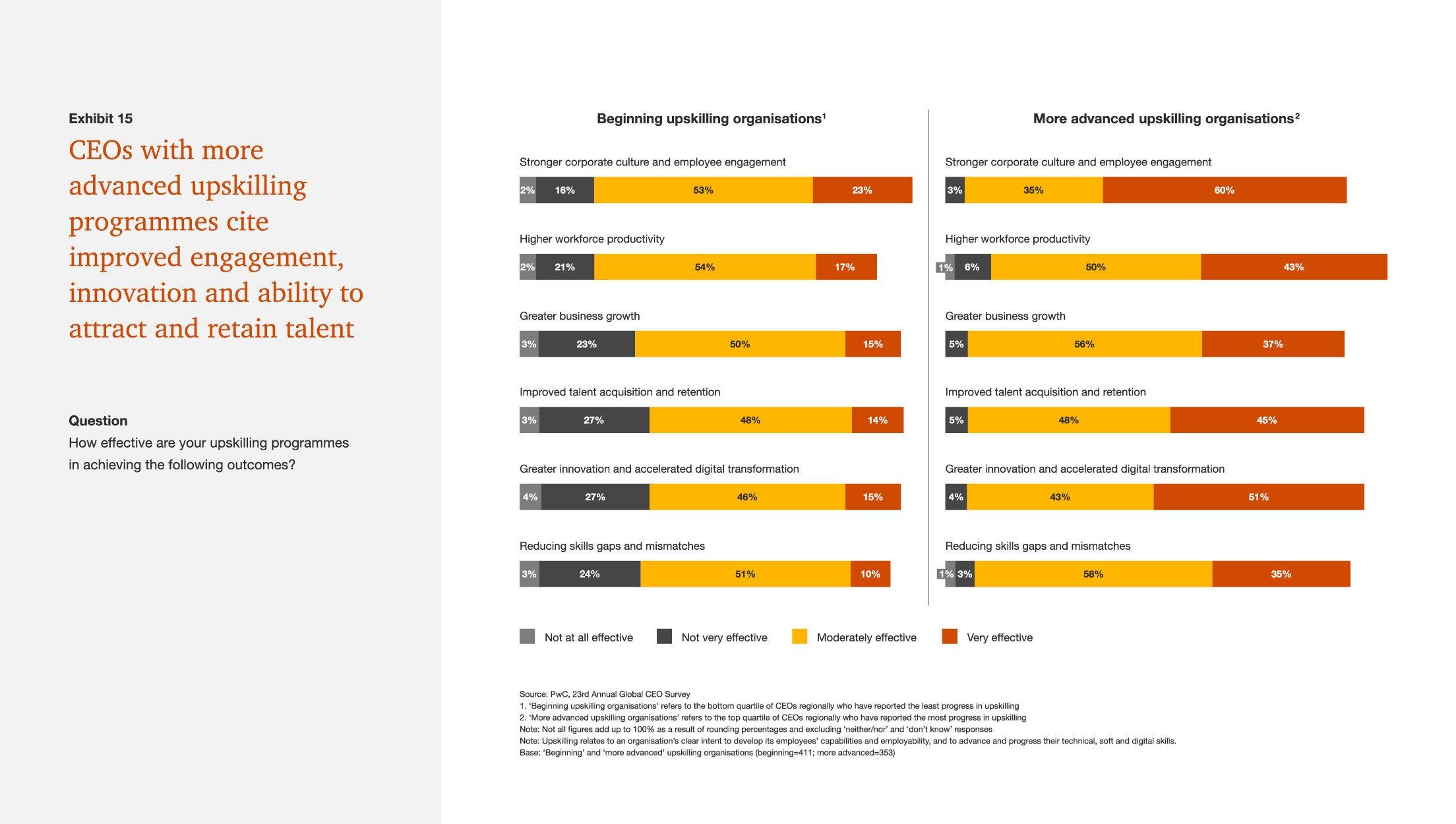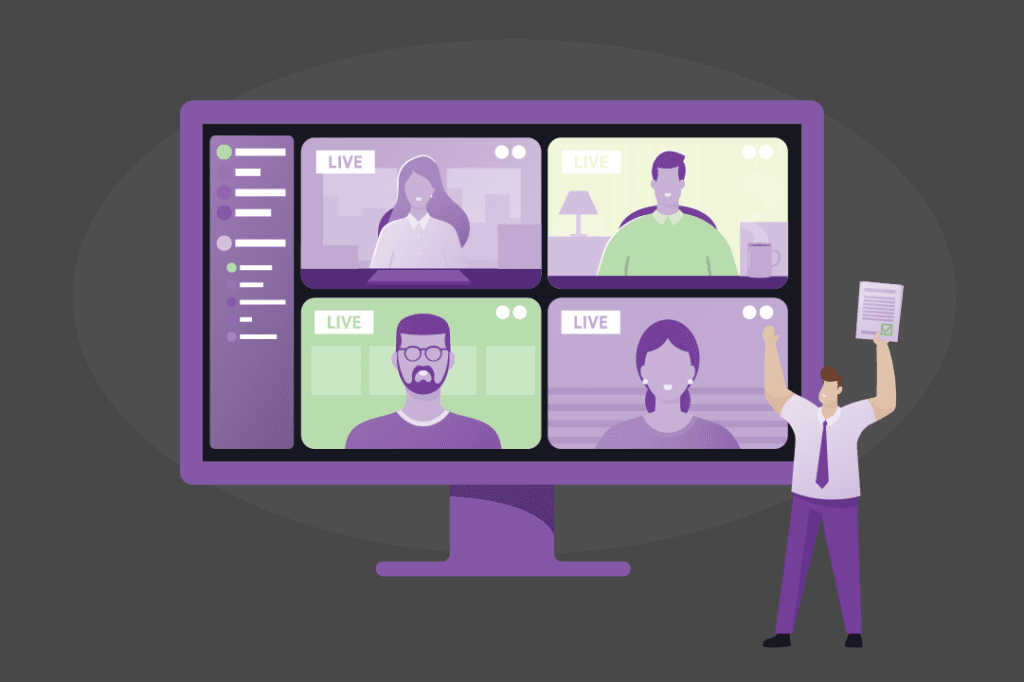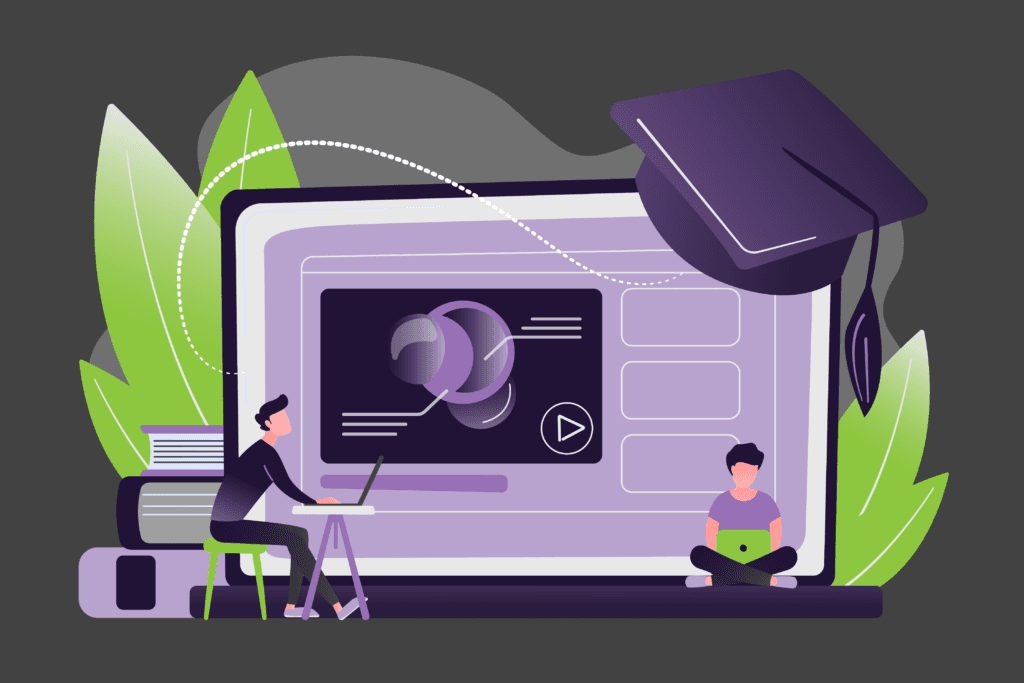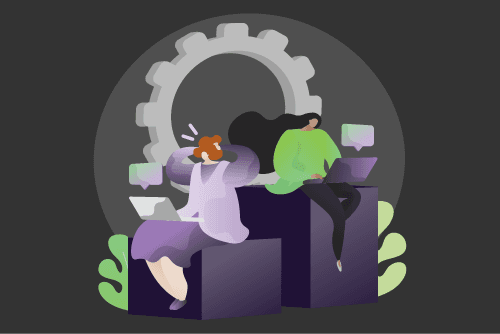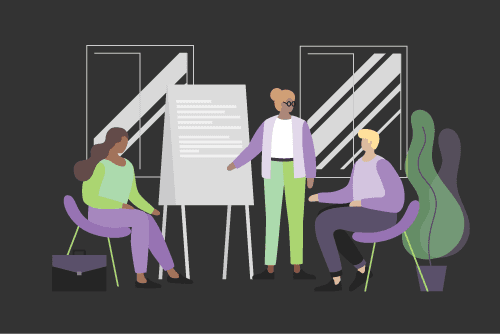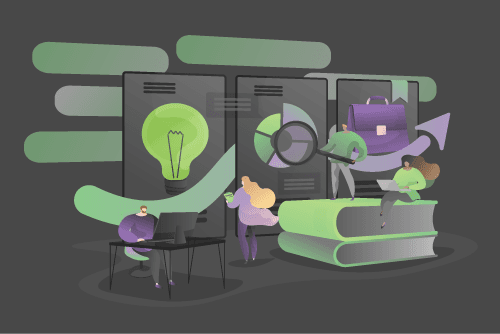How to Grow a Workplace Culture of Lifelong Learning: Flip Assumptions for Innovative L&D
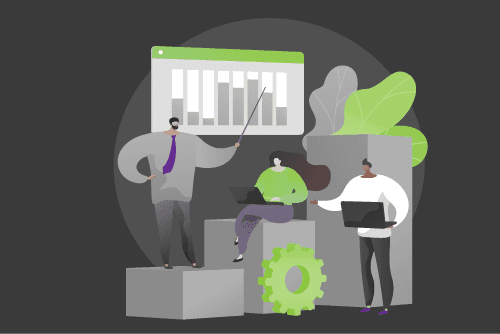
Lifelong learning is critical to surviving, let alone thriving in the 21st-century economy. Here’s how Australian leaders can grow a culture of connected lifelong learning.
A changing world brings workplace upheaval
We live in a rapidly changing world. Sweeping changes will affect all kinds of organisations — including yours. It’s now clear that the old approaches won’t cut it. From the macro to the micro-scale, from the organisational to the personal. And especially in the shadow of the COVID-19 pandemic.
Before COVID-19, the biggest drivers of change in business included:
With technological change speeding up, people are struggling to keep up. Technical skills now have an average lifespan of only five years. The World Economic Forum estimates that people will need an average of half a day per week of training and development. And that’s not even to get ahead; that’s the minimum required just to stay relevant.
Without 25 days per year of skills training, your people will fall behind.
And yet, employees feel ill-equipped and under-trained. In a Gartner survey of 7,000 employees, 80% said they lack the skills needed for their jobs today and their future career. Industry skills reports and studies repeatedly emphasise that organisations are falling short when it comes to training and development.
COVID made the problems worse, and faster
And then the pandemic came along, leaving a trail of global economic upheaval in its wake. Though Australia has officially emerged from its recession, we have not yet recovered. Australians will feel the effects of COVID-19 for years to come:
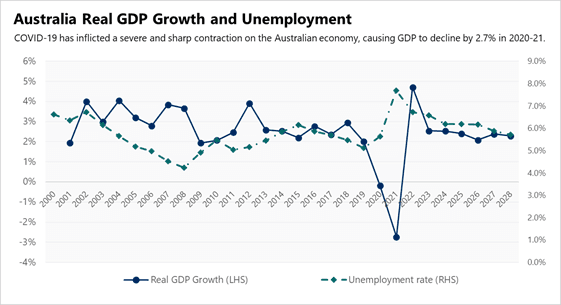
Image: IBISWorld
COVID also forced a massive shift to remote working. Which, in turn, necessitated a faster move toward workplace digitalisation, which looks like it’s here to stay. In a global PwC survey, 52% of CEOs said that, as workers return from remote work, they have plans for a more substantial shift to digital ways of working.
And yet digital skills are the most critical of all. Those who have the right ones will flourish in the workplace of the future. Those who don’t will be left stranded on the other side of the digital divide.
Lifelong learning: the key to adaptation
The workplace of the future is full of uncertainty. But one thing is certain: we need to adapt to our new situation. Because the rate of change has outpaced the classic cycle of ‘study, work, retire’, lifelong learning has become a necessity.
The good news is that the time has never been riper for a lifelong learning approach:
People are ready for new skills
74% of people are ready for more, better training to prepare them for the future of work.
Manager recognition is a powerful motivator
A large portion of employees — especially younger ones —would spend more time learning if it was recognised by their managers.
“Protect people, not jobs. Nurture agility, adaptability and re-skilling.”
So, what is lifelong learning?
Lifelong learning has become quite the buzzword amongst educators — and for good reason. It’s a broad term, increasingly mentioned in higher education, as well as political, social, and economic disciplines. But, because there is no standard definition, it often ends up as a bit of a catch-all concept.
The term ‘lifelong learning’ is often used to describe adult learning outside of formal education institutions. It can include community education, adult education programs, and vocational education and training.
But, more broadly, it describes the learning that occurs ‘from the cradle to the grave’, acknowledging that we continuously learn in many different ways throughout our lives. We learn through our everyday interactions, at work, in the classroom, through reading, podcasts, or researching things we’re interested in.
At first, this type of learning may seem self-explanatory. But lifelong learning doesn’t happen by accident. It’s intentional and proactive. To become a lifelong learner is to take on the identity of a learner, and consciously pursue learning over the long-term. It also includes building ‘learning skills’, like critical thinking and reflective learning — i.e. learning how to learn.
Learning is implicit in our lives. Lifelong learning makes it explicit.
What are the characteristics of lifelong learning?
The defining characteristics of lifelong learning are:
Five benefits for people
Personal development
Better employability
Social inclusion
Better motivation
Ability to pursue interests and goals
Five benefits for organisations
In a workplace context, lifelong learning refers to the idea that people should continually be upskilling and reskilling. Amid disruptive change, staff with up-to-date, flexible skillsets enables an organisation to stay competitive.
Healthier culture
Higher engagement, loyalty, and retention
Improved performance
Better use of learning resources
More agility
“Lifelong learning—when easily accessed and effectively delivered—has proven to increase earnings and help the unemployed return to work, while improving performance, productivity, and employee retention.”
How can my organisation create lifelong learners?
Some have pointed out that, when used in the workplace, what people really mean is ‘continuous learning’. This concept has a narrower scope than lifelong learning: it’s merely continually upskilling people to meet business needs.
But in the face of the coming challenges, a one-dimensional approach is not working.
The average organisation received a -25 Net Promoter Score in a 2019 study of workplace learning.
47% are ‘detractors’ of their workplace’s learning experience.
NPS scores were most positive in leadership positions, and in HR. They were at their most negative in individual workers (-33), and in marketing roles — at a woeful average of -45 NPS.
These results indicate that the ‘continuous learning’ approach is failing.
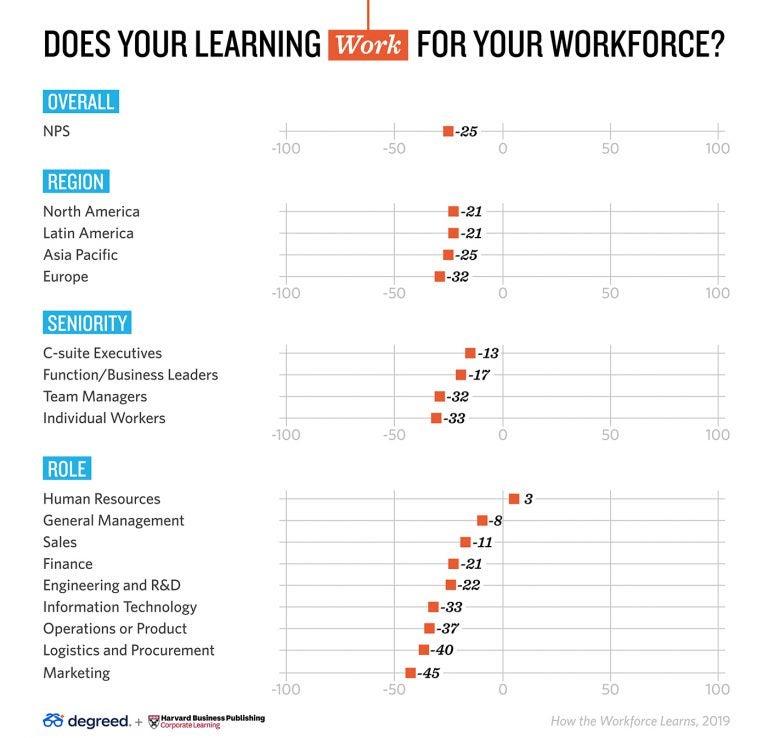
Image: Degreed
L&D mythbusting: four false assumptions
The status quo of workplace learning is failing because it ignores the realities of how people learn.
Your people will learn skills for work in their own time
A handful of people might do this, but most won’t, and it’s unfair to expect it. People often have caring duties, other responsibilities, or need time to look after their wellbeing. Plus, they may not have the money.
Your people will make time to learn at work
Outside of the piecemeal nature of DIY, task-oriented learning, this won’t happen. Your people are dealing with urgent assignments all day. Learning will not win if it has to compete with delivering projects.
Work and learning are separate activities
Most work-related learning happens while working. It occurs informally and on an as-needed basis. For example, people use Google and YouTube all the time to figure out how to accomplish tasks.
Your people will see the bigger picture
Taking people’s needs and interests into account is a good idea. But it’s difficult for individuals, left to their own devices, to make data-driven decisions or respond to market needs.
Continuous learning is one-dimensional and is concerned only with business needs. Lifelong learning is multidimensional. It’s about recognising human potential and supporting people to fulfil theirs.
If continuous learning is a monoculture soybean crop, lifelong learning is permaculture farming: long-sighted, holistic, resilient.
To continue the metaphor, think of a learning culture like an ecosystem. You can’t just throw seeds on the ground and expect them to grow. And similarly, it takes more than just telling people to be lifelong learners — even if it’s in their best interests.
In a thriving ecosystem, everything is connected. This enables sustainability and self-renewal, year after year. To build a lifelong learning ecosystem in your organisation, start building connections. Connect technology, market demand for skills, and personal needs. Make it more possible for people to learn from one another. With good planning, social learning can be the cross-pollinator of a flourishing learning community.
Gartner research shows that building connected learners boosts different elements of skills preparedness by 28%-39%, and delivers other benefits to employees and the organisation. For example, connected learners are eight times more likely to be high performers.
Here are four steps to flip these four assumptions and do just that.
Flip #1: Build policy frameworks to promote learning equity
Lifelong learning needs the right kind of scaffolding to grow. Most organisations, however, are not building it, leaving learning up to individuals. But this means that some people will have unfair advantages — and drive deeper inequities.
Ask yourself: are our people getting sufficient training and development to keep up? Are our employees getting 25 days of training per year, or half a day per week? And that’s just to keep up with the market demand for skills. Improvement requires more learning and development.
For example:
Taylor has had many advantages in their upbringing. They have plenty of resources (time, money, connections). Taylor takes up a $1500 course outside of work hours to keep their skills current. This leads to better career opportunities and pay, which add up throughout their career.
In contrast:
Blake is already facing some barriers to participation in the workplace. They have caring duties at home and financial obligations to their family. They don’t have the time or money to take a course, and their workload leaves no time for extra learning at work. In the absence of relevant learning, their skills become obsolete over the next decade. They are made redundant. They struggle to reskill into a new, lower-paying job with little opportunity to progress.
So, what does a supportive policy look like? It should be a company-level policy, promoted and modelled by leadership. It should make it possible for all staff members to participate equally, and make sure people are getting enough skills development to be self-sustaining.
This kind of policy would include:
Flip #2: Create formal incentives
Now that you’ve created a supportive environment, you’ll need a way to ensure that your people are as invested as you are.
According to the Deloitte 2019 Future of Learning & Development report, 55% of respondents said there was no link between incentives at work and acquiring new skills. Creating a connection between learning programs and financial incentives lowers the risk that your programs will go underused.
A UNESCO report recommends revisiting incentives as a crucial part of making workplace learning accessible to all. If lifelong learning is to be mutually beneficial, the organisation and its people must share the responsibility. Making sure people are incentivised for pursuing competencies aligned to your company’s needs is a great start.
Flip #3: Make it personal
Now that you have a way to make sure people are using your learning system, it’s time to get personal. The old model of continuous learning is one-directional: HR tells employees what skills the business needs, and employees learn them. Or not.
Lifelong learning’s new model is distinct from continuous learning because it needs people to own their own learning journey — as the concept of lifelong learning connects closely to the democratisation of learning. In your communications, you can encourage self-directed learning by connecting business needs with professional development and things your people are passionate about.
M-shape is the new T-shape
Being a T-shaped professional (a deep specialist with some generalist skills) has become obsolete. An essential element of lifelong learning, according to a McKinsey study, is becoming a serial master — an M-shape, involving ‘subsequent and adjacent deep dives to achieve mastery in a few subjects’. These deep dives require a lot of energy and are, by necessity, motivated by personal interest.
For instance, Jordan may initially study a Bachelor of Arts, majoring in psychology and anthropology. A couple of years later, she completes a part-time design Diploma. After working in UX Research for a while, she finds her interest deepening in the field. She decides to complete a Master’s of Interaction Design alongside her work in the field.
Lifelong learning works because it seeks to make the most of human potential — not just human capital. Personal investment and ownership happen when learning is part of a conversation.
In practice, this means tailoring your learning programs to each individual and connecting people with relevant learning opportunities.
Emphasise personal growth and development in communications.
Listen to your people when they tell you what they want to learn.
Offer smaller, bite-sized learning experiences in video and interactive formats.
Use platforms that deliver personalised recommendations.
Scaling personalised learning presents a challenge. But that’s where the next step comes in: leveraging technology.
Flip #4: Integrate learning into workflows with tech
Learning happens not only at work but in the flow of work. Notifications come to us. Content is on-demand. Workplace learning needs to be as connected as we are to find a place amongst all the other demands on our attention.
Here are some innovative ways tech can help you to personalise and integrate learning.
LXP replaces LMS
The traditional LMS approach requires learners to visit a standalone platform or learning software. But this is not how people are learning.
Learning Experience Platforms (LXPs) are the newest big trends when it comes to e-learning. They are superseding the LMS. An LXP is a content delivery system that brings learning straight to where your people already work — whether that’s Slack, email, Atlassian, or Microsoft Teams.
‘With LXPs, content can be integrated into any system to offer on-demand learning; material can be organised into channels or playlists based on specific topics, skills, or learning objectives; and users can share and rate content, leave comments, and receive recommendations using dynamic social settings.’
Building with APIs
Another option is to build custom connections, which means you’re not locked into one platform but can pull dynamically from many content sources. Enter APIs, the database-connecting technology that makes integrations possible. If you’ve ever used IFTTT, a Slackbot, or Zapier, then you’ve used an API.
“Rather than compete for employee attention and try to entice staff to another platform, you can use APIs as a backdoor pass to the main stage: drop something relevant, interesting and good from the world of learning into the world of work.”
— Marc Zao-Sanders, founder and CEO at filtered.com
How this might look
Create an internal learning comms channel
This channel will be a dedicated place for people to share and summarise things they’ve learned. Encourage active people to use it and promote new content.
Automatically redistribute shared content
Use algorithms to identify learning content that people send to each other. Tag it, then automatically send it to the right people or channels. This amplifies social learning and spreads it across teams and departments.
Use APIs
Connect learning content with collaboration platforms. This will make learning content easily accessible from where your people are doing work.
Add chatbots
Add chatbots to your company’s primary workflow software, i.e. Slack. You might create a chatbot that asks people a series of questions or conducts a skills gap analysis, then shows them a tailored list of learning modules or micro-credentials. This fits in nicely with using APIs.
Create email learning journeys
Email is still a big part of the knowledge worker’s day. Create custom learning journeys in much the same way as an email marketing team creates customer nurturing journeys: drip-feeding pieces of engaging, compelling content. Answer people’s questions or inspire them to take action.
Flip #5: Look to the future and the community
You’ve built the scaffolding. You’ve planted the seeds, watered, and cross-pollinated. The lifelong learning ecosystem is starting to flourish! To keep it that way, keep one eye on the big picture, and stay connected to the broader community and the economy.
“Business leaders will need to rethink jobs, protect people and work with others to pool resources, ideas and investments.”
— Robert E. Moritz, Global Chairman, PwC
There are three ways to do this:
Use big data for Training Needs Analysis
A recent PwC report urges you to collect as much objective data as possible. Collect lots of it, from different sources, all the time. Analyse this data and use it to inform your training needs analysis. This will make sure your organisation and your people are more closely aligned with market demands. Competitiveness and employability both benefit.
Include the excluded
The digital divide is going to pose a pressing problem for talent acquisition and broader society. Together with automation making jobs redundant, many people will be left behind without the skills they need to find new jobs. Take a look at all departments, not just the moderately or highly-skilled, and ensure they’re getting enough training — that’s 25 days per year — to be self-sustaining in the future.
Make learning part of your Corporate Social Responsibility (CSR) programs
Investing in your people has a flow-on effect to the rest of the community and society. Add workplace training and development to your CSR reporting, and consider supporting skills training programs for people whose livelihoods have already been disrupted by COVID, or will soon be disrupted by the digital divide and automation.
Lifelong learners are crucial to the successful organisations of the future
Fostering a culture of lifelong learning will lift performance across your organisation. It will give your workforce more agility, adaptability and competitiveness. You can bring this to life through creating supportive policies, a good incentive structure, personalising learning, and using technology to integrate learning into the flow of work.
L&D leaders who keep one eye on the big picture and one eye on the human will be ready to navigate an uncertain post-COVID future.
Ready to start creating lifelong learners?
Get help sourcing great training for your people.
